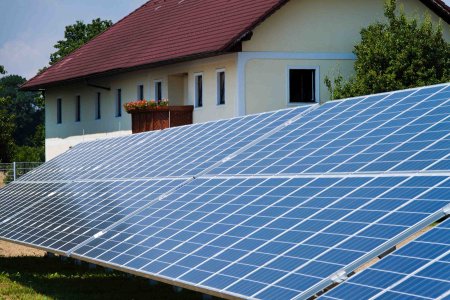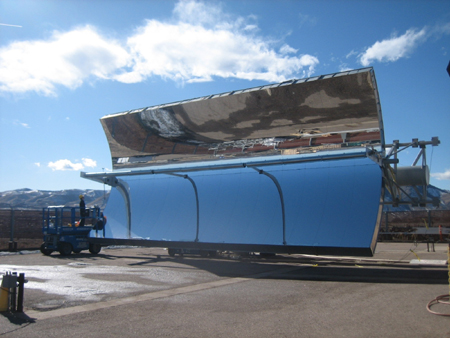More than 2,000 years ago, the Greeks and Romans used mirrors to concentrate the sun’s energy and light torches for their religious ceremonies. And even the photovoltaic effect — a means to convert light into electricity that remains a key technology today — dates back nearly 200 years, to French scientist Edmond Becquerel’s groundbreaking work.
Despite this long history and a record of extraordinary technological advances, solar power remains an almost imperceptible speck in the global energy picture, the source of less than 1 percent of world energy production in 2008. But that might be changing, as environmental concerns and geopolitics drive new solar research and implementation. Ken Zweibel, head of the George Washington University Solar Institute, maintains that “a massive switch from coal, oil, natural gas and nuclear power plants to solar power plants could supply 69 percent of the U.S.’s electricity and 35 percent of its total energy by 2050.”

Although methods for taking advantage of energy produced from the sun are myriad, the U.S. government narrows the field to five major areas. Two of those five — photovoltaics and concentration of solar power (CSP) — hold out hope for large-scale power generation, with solar hot water, passive solar and solar process heat playing important but lesser roles.
PHOTOVOLTAICS
The National Renewable Energy Laboratory defines photovoltaics (PV) as a process of converting light (photons) to electricity (voltage). This “PV effect” occurs when a photovoltaic cell comprising semiconducting material absorbs photons, essentially knocking loose electrons, which then flow through conductive layers to generate a current. Until recently, silicon was the go-to conducting material used in photovoltaic cells, but according to Zweibel, thin-film modules, particularly those made of cadmium telluride, have become the lowest-cost producer of solar electricity and are growing in use.

A chief asset of photovoltaics is that the technology is scalable. At small scales it can power gizmos and provide energy for residences or businesses. Or, thousands — even millions — of panels can be gathered together in an array for large-scale energy production.
Zweibel estimates that by 2050 photovoltaics could provide 3,000 gigawatts (GW) of power in the United States, an astounding total given that today the number is less than 1 GW.
CONCENTRATION OF SOLAR POWER
For the large-scale generation of electricity, photovoltaics compete in the marketplace with concentration of solar power: Sun energy is collected by mirrors and focused on a target to heat water — which is why this method is often called “solar thermal.” As solar consultants Jonathan A. Lesser and Nicolas Puga put it, “CSP plants are basically steam turbines that rely on the sun, rather than fossil or nuclear fuel, to make steam.”

Solar concentrating devices come in three main forms: linear or trough; dish/engine; and power tower. Linear or trough systems use variously shaped mirrors to concentrate heat from the sun on a fluid-filled tube attached just above the mirror. Dish/engine systems start with what looks like giant satellite dishes, which concentrate the sun’s heat on an energy-producing engine at the center of the dish. Power-tower systems — like the Ivanpah project approved for the Mojave Desert — use vast mirror fields to focus solar energy on a tall receiver at the center of each array.
SOLAR HOT WATER, PASSIVE SOLAR, SOLAR PROCESS HEAT
The last three forms of solar power are common but unlike photovoltaics and CSP, tend not to have large-scale, energy-producing applications. Solar hot water, often seen in roof-mounted systems, uses a black collector plate with a transparent cover to heat water that runs through tubes within the plate. Passive solar, as the name implies, maximizes sunlight exposure for heat and light by careful architectural design and material use. Solar process heat typically comes into play in industrial uses; for instance, transpired collectors — panels mounted on south-facing walls of large buildings — can absorb heat, which can then be fed through ventilation systems to warm building during cool months.